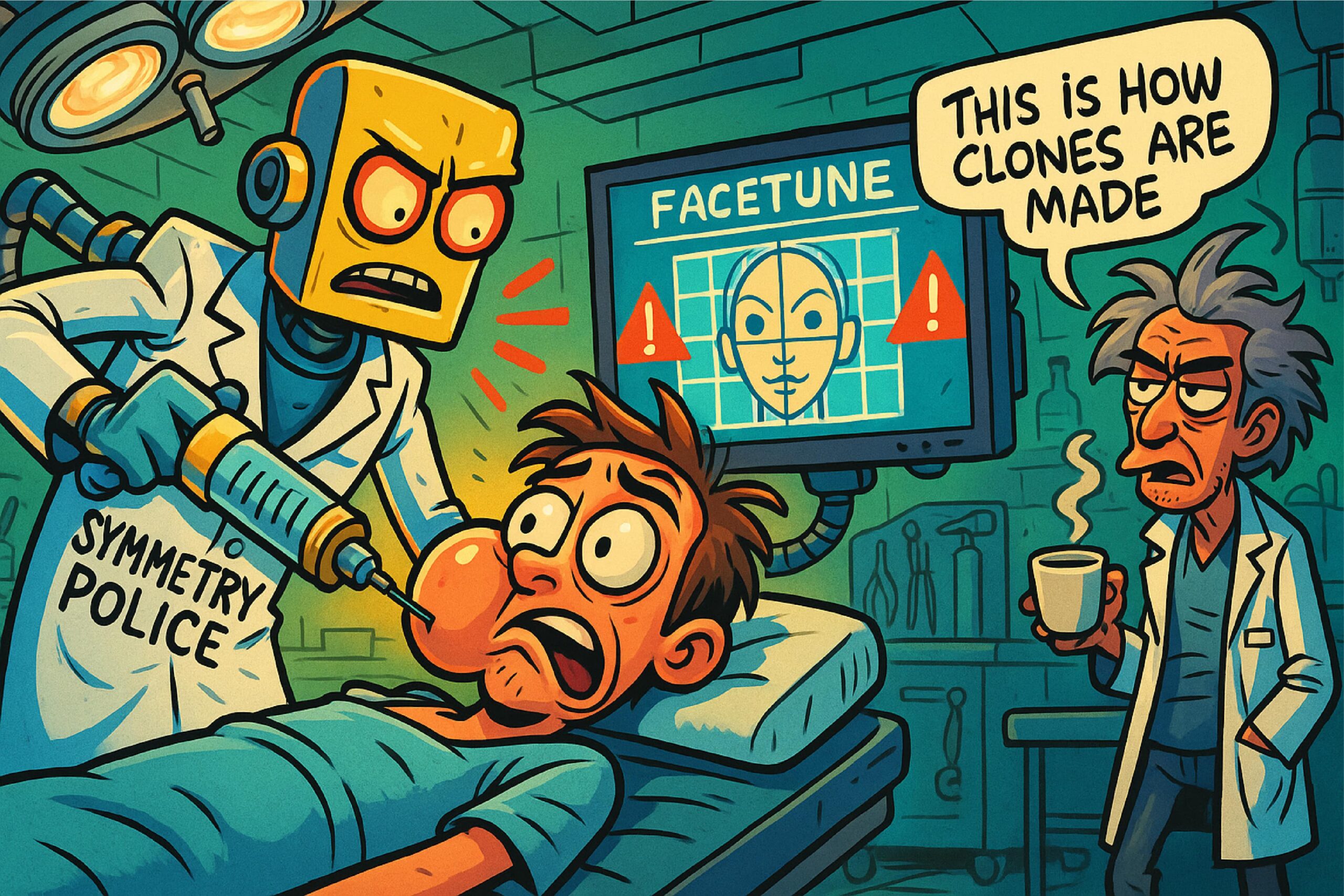It doesn’t.
Here’s The Nonsense The Industry Loves To Push…
Result? Zombie clones with one purpose: to please the grid on Facetune.
Reality Check: Symmetry Is A Marketing Myth, Not A Clinical Target
Let’s dismantle this drivel with actual evidence, shall we?
Want a perfectly symmetrical face? Great. Flip half of someone’s face in Photoshop and mirror it.
You’ll get a result that’s objectively horrifying—uncanny valley stuff. In a 2007 study from Evolution and Human Behaviour, people preferred faces with mild asymmetry over perfectly symmetrical ones. Why? Because our brains crave realism, not robotics.
A 2011 paper in Perception found that slightly asymmetrical faces were rated as more approachable and emotionally expressive than symmetrical ones.
Perfect symmetry can be unsettling. Think: mannequins. Serial killers. Politicians in HD.
When you iron out every irregularity, you strip a face of its soul.
This is the kicker. When injectors chase symmetry—trying to match one brow to the other, balance every nasolabial, align every jaw corner—they usually end up overfilling one side.
Cue migration, puffiness, volume stacking, and that classic “left cheek sitting on a pillow” look.
Oh, and by the way: No one in the history of patients has EVER said, “I’d love more medial cheek volume on my left zygoma to match the shadowing on the right.”
They say: “I want to look fresher.” They mean: “Don’t make me look weird.” You give them: “Balance.” They walk out looking like a statue made of marshmallow.
Truth Bomb: Stop Trying To Fix What Was Never Broken
Want to know what actually makes someone attractive?
- Facial harmony
- Soft tissue volume distribution
- Liveliness and movement
- Personality cues like smile asymmetry and eye micro-expressions
None of which you can measure with callipers.
The Better Framework: Functional Aesthetics
Try this instead:
- Look at how the face moves. Smiles, squints, resting expressions— these tell you where volume matters and where it doesn’t.
- Balance the perception, not the angles. Ask yourself: “What draws attention here?” Often it’s shadow, not shape.
- Inject to blend, not to match. The goal isn’t to make the sides identical. It’s to make them cohesive.
- Respect individuality. That slight eyelid ptosis? It’s part of who they are. That uneven lip movement? Charming. Don’t erase character in the name of faux “perfection.”
So... Stop Being A Symmetry Soldier And Start Being A Face Whisperer.
References
- Rhodes, G., et al. "Facial symmetry and the perception of beauty." Psychological Science, 2005.
- Zaidel, D. W., & Hessamian, M. "Asymmetry and attractiveness: Facial beauty and occlusion." Perception, 2011.
- Fink, B., & Penton-Voak, I. "Evolutionary psychology of facial attractiveness." Current Directions in Psychological Science, 2002.


